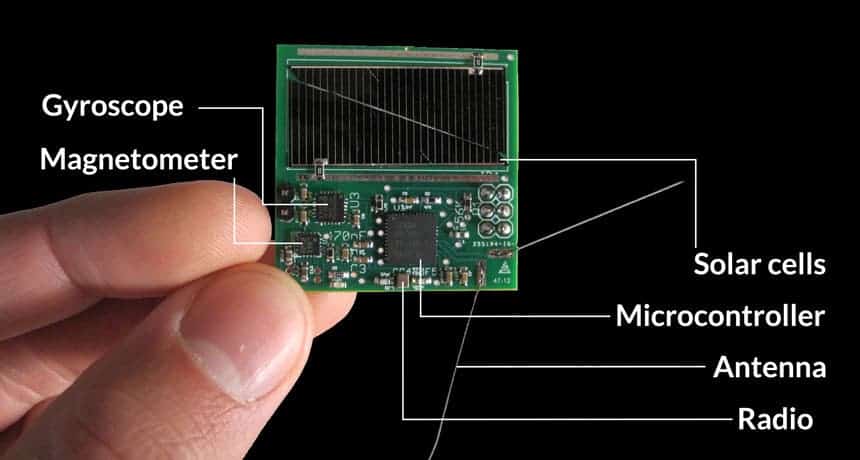If at first you don’t succeed — go smaller. Breakthrough Starshot, an initiative that aims to send spacecraft to neighboring star systems, has launched half a dozen teeny tiny probes named Sprites to see test their minute electronics against outer space
We’re understandably quite excited as a species for the day we finally reach some place that isn’t ‘here’. In cosmic terms, that would be Alpha Centauri, a trio of stars that are our closest neighbors. But there’s a problem: since we’re talking in cosmic terms, it would take tens, possibly even hundreds of thousands of years for a ship blasting with the full might of our current propulsion tech to reach Alpha Centauri. Which just won’t do.
Baby ships
Breakthrough Starshot is trying to work around that issue by capitalizing on a technology emerging in the last 15 or so years to reach a significant fraction of light speed: light-powered space travel. What this basically entails is for a hugely powerful Earth-borne laser to shine on a craft and thus provide thrust. It’s not a lot of thrust, granted, since you’re pushing stuff with light, but on the upside it’ll allow you to go pretty fast eventually.
Here’s where the Sprites come in. Each Sprite represents a prototype of the crafts Starshot wants to send a-knocking to Alpha Centauri. And they’re really, really tiny. The whole probe is built on a single 3,5 cm (1,37 inch) square circuit board and weighs in at a hefty four grams (0,14 ounces). Each packs a solar panel, radio, thermometer, magnetometer for compass capabilities and gyroscope for sensing rotation, and costs about ten dollars to make.
“We’re talking about launching things that are a thousand times lighter than any previous spacecraft,” says Avi Loeb, an astrophysicist at Harvard University who is part of the committee advising the initiative.
Fit some lightsails on them and these bite-sized crafts can reach up to 160 million km (100 million miles) per hour, potentially reaching Alpha Centauri in about 20 years from launch. They won’t have a human crew, sure, but will be perfectly capable of beaming back pictures and other data from the planets there.
For now, the probes were launched into space to see if they’ll survive in the cold, harsh conditions up there. They hitched a ride on a low Earth orbit on two satellites, Max Valier and Venta-1. Each satellite has a Sprite permanently attached to its outer casing, and the Max Valier holds a further four it can deploy to space. As of August 10, however, ground control hasn’t been able to deploy these four Sprites, and only one of the two permanently attached ones (probably the one on Venta-1) is still in radio contact.
Comms problems aside, the Sprites seem to hold out fine up to now. The team plans to add more tools including cameras and actuators offer more control to the Sprites before sending the next generation of “StarChip” probes on their way to Alpha Centauri, and to shift communications to a laser-based system rather than the current radio one.










